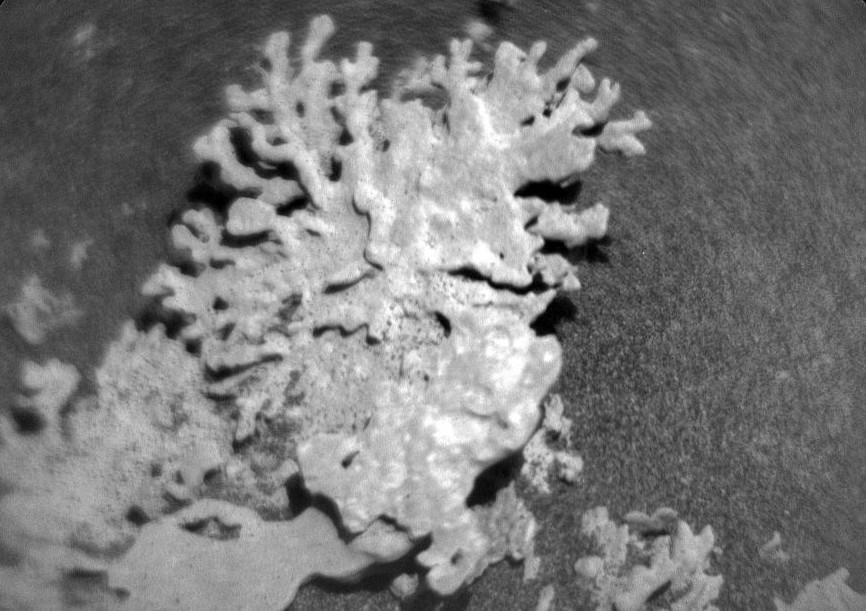
Coral-shaped Rock Spotted on Mars, NASA Shares Pic
In a fascinating discovery, NASA’s Curiosity Mars rover has sent back stunning black and white images of a rock on the Martian surface that bears an uncanny resemblance to a piece of coral. The remarkable find was made in the Gale Crater, a large impact basin on Mars, and scientists believe the coral-like rock is approximately a billion years old.
The images, captured by the rover’s ChemCam instrument, show a rock with a distinctive coral-like shape, complete with intricate details and textures that resemble the delicate structures found on Earth’s coral reefs. The rock’s appearance has sparked widespread interest and curiosity among scientists and space enthusiasts alike, with many wondering how such a unique feature could have formed on the barren, rocky surface of Mars.
According to NASA, the coral-shaped rock was discovered in the lower part of Mount Sharp, a three-mile-high (five-kilometer-high) mountain within the Gale Crater. The rover has been exploring the Martian surface since 2012, and its ChemCam instrument has been instrumental in analyzing the chemical composition of rocks and soil.
The ChemCam instrument uses a laser to vaporize the rock’s surface, and then analyzes the emitted light to determine the chemical makeup of the rock. In this case, the instrument detected a high concentration of iron and magnesium, which are common minerals found in rocks on Mars.
While the coral-shaped rock may look like a relic from a Martian ocean, it’s unlikely that water ever flowed on the surface of Mars. Instead, scientists believe that the rock may have formed through a process known as “concretion,” where minerals precipitate out of groundwater and accumulate into a hard, rock-like material.
The concretion process is thought to have occurred in a shallow lake or sea that may have existed in the Gale Crater billions of years ago. Over time, the minerals in the water would have reacted with the surrounding rock to form a hard, coral-like structure.
The discovery of the coral-shaped rock is just the latest in a long line of fascinating finds made by the Curiosity rover. Since its landing on Mars in 2012, the rover has discovered evidence of ancient lakes, rivers, and even an ocean on Mars, which suggests that the planet may have been habitable in the past.
While the coral-shaped rock may not provide conclusive evidence of past life on Mars, it does offer a fascinating glimpse into the planet’s complex geological history. As scientists continue to study the rock and its surroundings, they may uncover new insights into the Martian environment and the processes that shaped its surface.
The discovery of the coral-shaped rock is a testament to the power of exploration and the importance of continuing to explore our solar system. Who knows what other secrets lie hidden on the surface of Mars, waiting to be uncovered by future missions?
Source: https://www.jpl.nasa.gov/images/pia26634-curiositys-chemcam-views-a-rock-shaped-like-coral/






